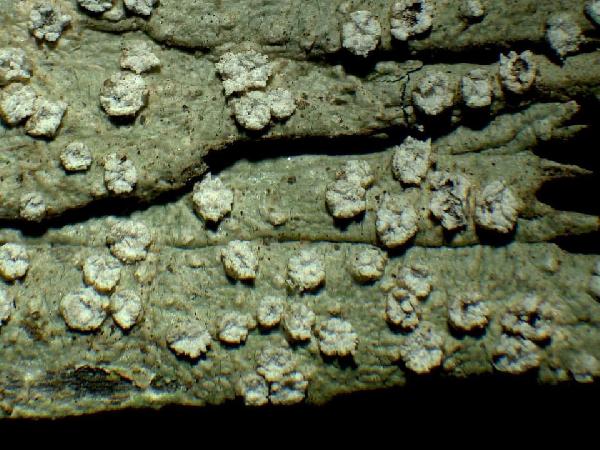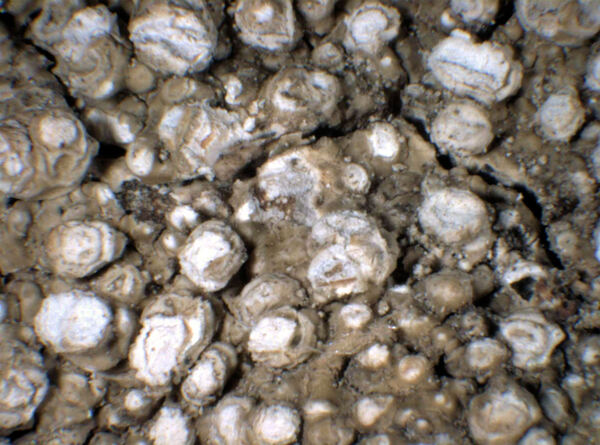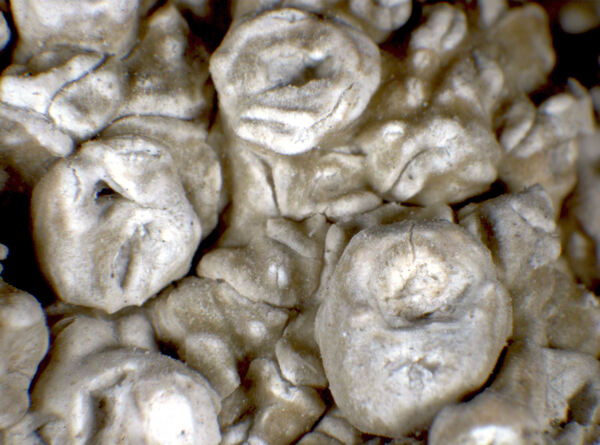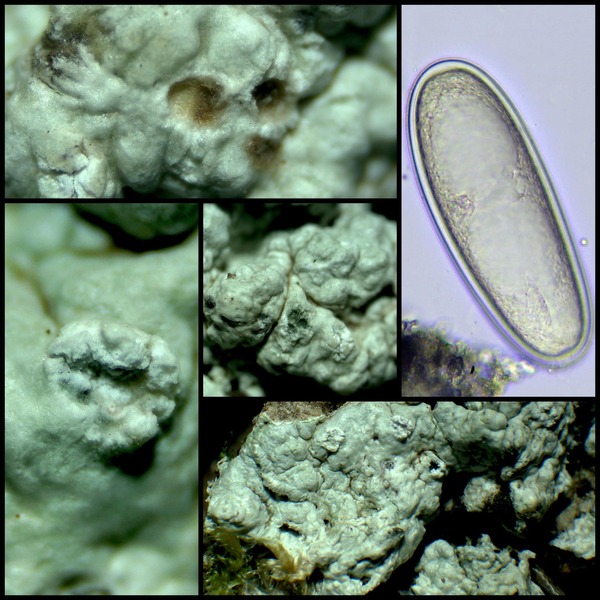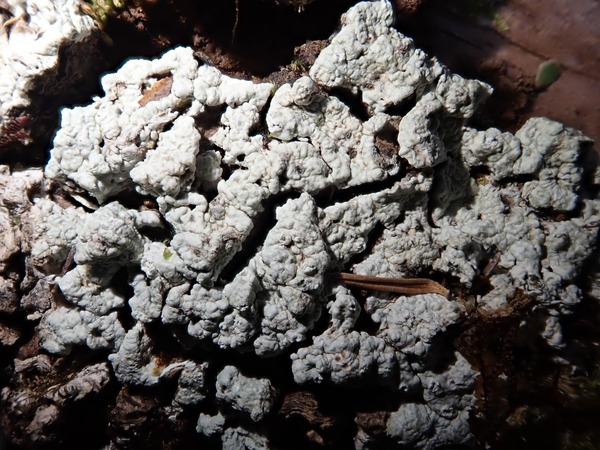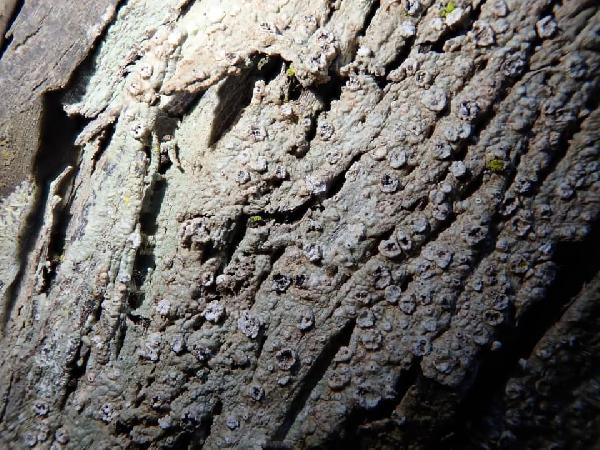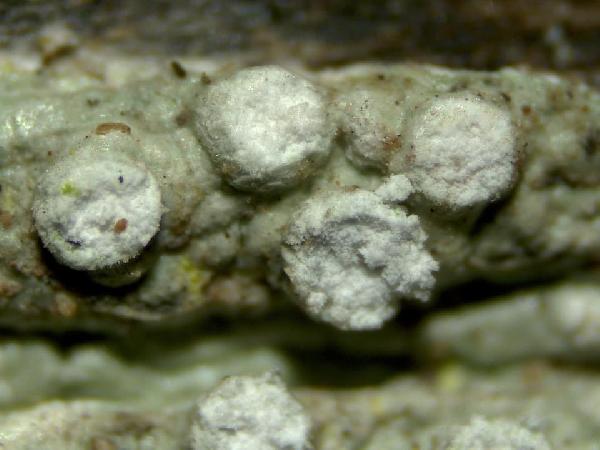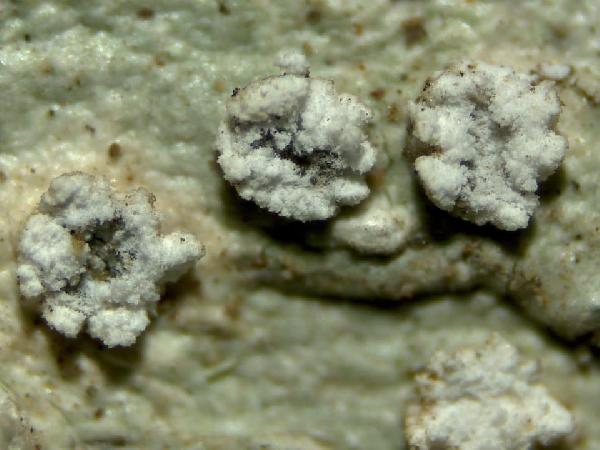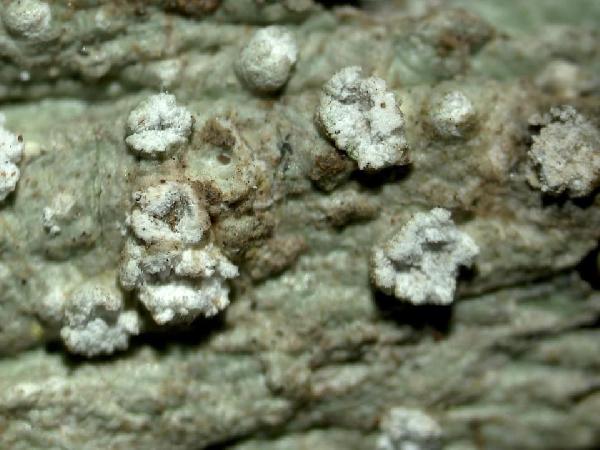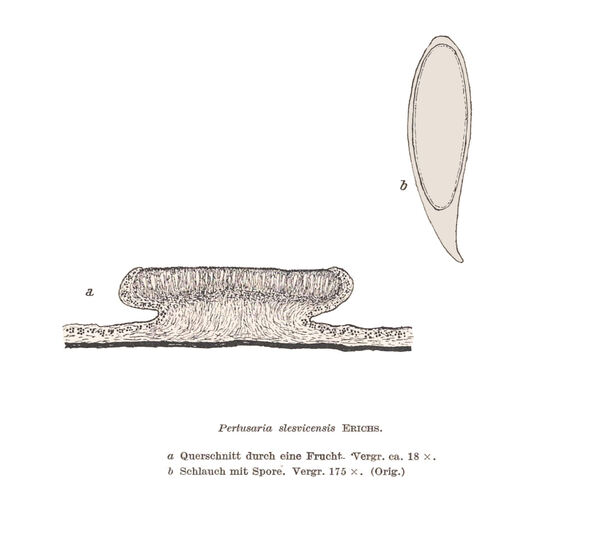Lepra slesvicensis (Erichsen) Hafellner
in Hafellner & Türk, Stapfia, 104: 172, 2016. Basionym: Pertusaria slesvicensis Erichsen - Feddes Rep., 35: 391, 1934.
Synonyms: Pertusaria amara f. slesvicensis (Erichsen) Almb.; Pertusaria slesvicensis Erichsen
Distribution: C - Tosc (Brunialti & Frati 2010, Craighero 2010, Frati & Brunialti 2023), Laz (Ravera 2001, 2002, Massari & Ravera 2002, Craighero 2010), Mol (Caporale & al. 2008), Sar (Zedda 1995, 2002, Loi & al. 2000, Zedda & Sipman 2001, Zedda & al. 2001, Craighero 2010, Cossu 2013). S - Camp (Brunialti & al. 2010, 2013, Craighero 2010, Ravera & Brunialti 2013), Pugl (Craighero 2010), Bas (Craighero 2010), Cal (Puntillo 1996, Incerti & Nimis 2006, Craighero 2010).
Description: Thallus crustose, episubstratic, continuous to fissured, whitish, pale grey or greenish grey, rarely weakly zoned at margin, delimited by a white prothallus, esorediate. Apothecia rather common, immersed in strongly convex and basally constricted, 0.5-3 mm wide and up to 2(-3) mm high fertile warts, 1(-3) per wart, with a brownish, often white-pruinose disc, and a slightly prominent thalline margin. Epithecium brown, K-; hymenium colourless; paraphyses slender, 1-1.5 µm thick; hypothecium colourless. Asci 1-spored, broadly cylindrical, the apex without a distinct ocular chamber, the outer sheath K/I+ blue, otherwise K/I–, with an inner extensible layer, Pertusaria-type. Ascospores 1-celled, hyaline, ellipsoid, 220-350 x 50-75 µm, the wall 2-5 µm thick. Pycnidia immersed, black. conidia short-bacilliform, 4-5 x 0.6-1 µm. Photobiont chlorococcoid. Spot tests: thallus K-, C-, KC-, P-; top of fertile warts and medulla K-, C-, KC+ fleeting violet, P+ reddish, UV-; medulla with a strongly bitter taste. Chemistry: picrolichenic acid. Note: an epiphytic lichen related to L. amara, but regularly fruiting, and most frequent in eu-Mediterranean areas, with a mainly Tyrrhenian distribution in Italy (Craighero 2010). A DNA study could better clarify its status. It is included in the Italian red list of epiphytic lichens as “Data Deficient” (Nascimbene & al. 2013c).
Growth form: Crustose
Substrata: bark
Photobiont: green algae other than Trentepohlia
Reproductive strategy: mainly sexual
Commonnes-rarity: (info)
Alpine belt: absent
Subalpine belt: absent
Oromediterranean belt: absent
Montane belt: absent
Submediterranean belt: absent
Padanian area: absent
Humid submediterranean belt: absent
Humid mediterranean belt: rather rare
Dry mediterranean belt: extremely rare
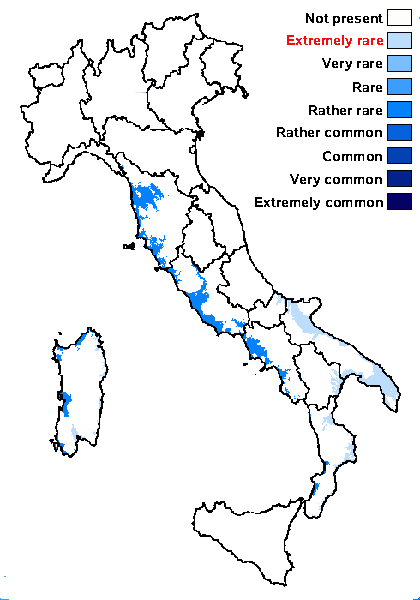
Predictive model
Herbarium samples
Growth form: Crustose
Substrata: bark
Photobiont: green algae other than Trentepohlia
Reproductive strategy: mainly sexual
Commonnes-rarity: (info)
Alpine belt: absent
Subalpine belt: absent
Oromediterranean belt: absent
Montane belt: absent
Submediterranean belt: absent
Padanian area: absent
Humid submediterranean belt: absent
Humid mediterranean belt: rather rare
Dry mediterranean belt: extremely rare

Predictive model
| Herbarium samples |
 Index Fungorum
Index Fungorum
 GBIF
GBIF
